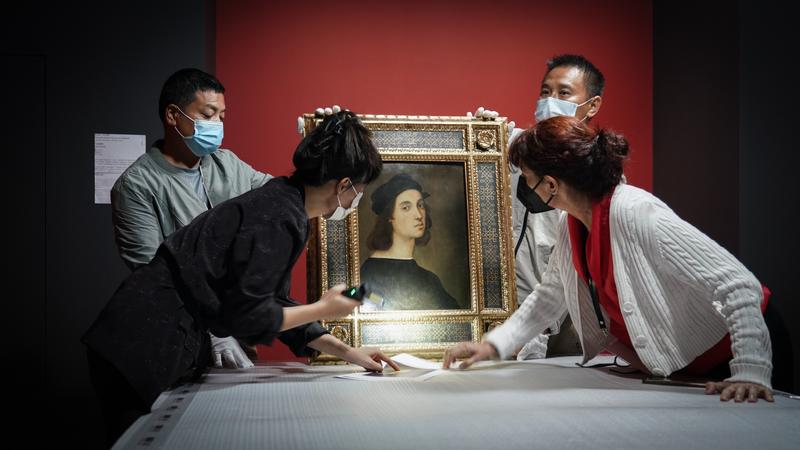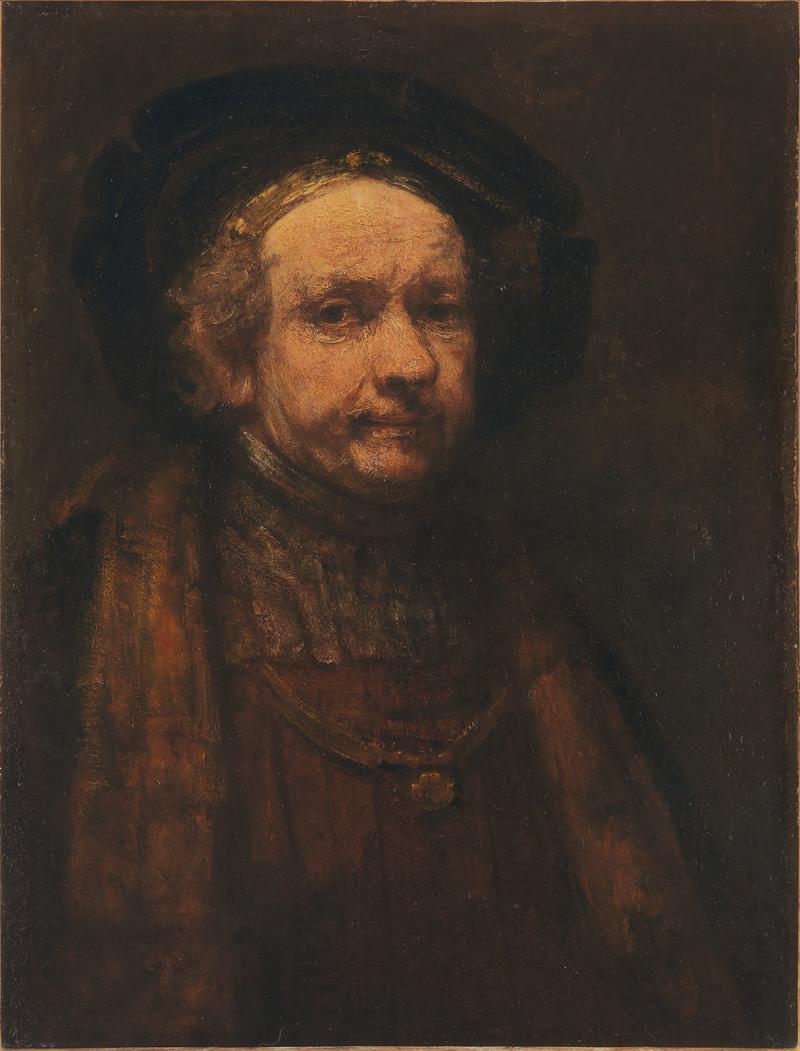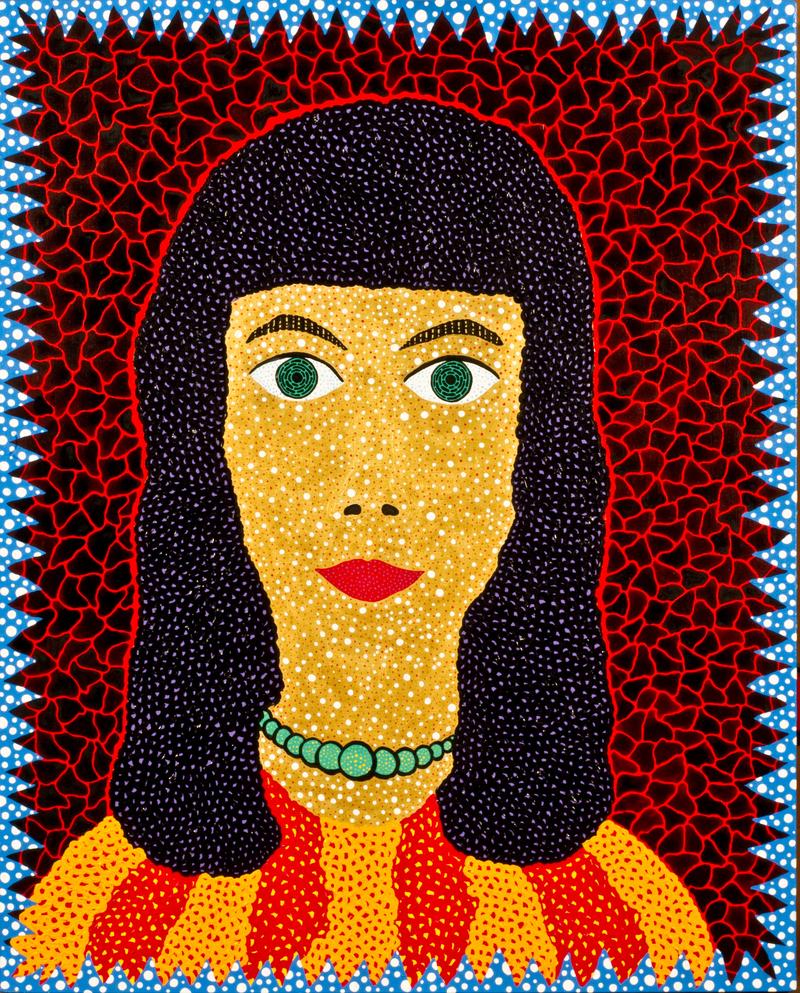 Laura Donati (first from right), curator of the graphic arts at the Uffizi Galleries, checks the Raphael's self-portrait before the exhibition. (PHOTO PROVIDED TO CHINA DAILY)
Laura Donati (first from right), curator of the graphic arts at the Uffizi Galleries, checks the Raphael's self-portrait before the exhibition. (PHOTO PROVIDED TO CHINA DAILY)
Fifty self-portraits by well-known artists is being showcased in a 10-exhibition series in Shanghai.
The series, presented by the Uffizi Galleries, Florence, Italy, ranges from Renaissance masters such as Italian painters Raphael and Titian, and Flemish Baroque painter Rubens to contemporary figures like Japanese artist Yayoi Kusama and Chinese multidisciplinary artist Cai Guoqiang.
Titled Uffizi Self-portrait Masterpieces, the exhibition kicked off at the Bund One Art Museum on Sept 9. It will run until Jan 8. The exhibition, which has been specially curated for Shanghai, will eventually become a permanent showcase at the Uffizi Galleries, according to Laura Donati, a curator with the Italian museum, one of the most prominent art institutions in Europe.
In November, Tix-Media, the parent company of Bund One Art Museum, and the Uffizi Galleries signed a partnership contract that will see the latter present 10 exhibitions in Shanghai over the next five years. The first exhibition of this series was to be Botticelli and Renaissance Masters but it had to be postponed from March to next year due to the COVID-19 outbreak in Shanghai.
Self-portraits have a special significance at the Uffizi as the museum has a collection of more than 1,800 that date back to the Renaissance era.
 A self-portrait by 17th-century Dutch artist Rembrandt. (PHOTO PROVIDED TO CHINA DAILY)
A self-portrait by 17th-century Dutch artist Rembrandt. (PHOTO PROVIDED TO CHINA DAILY)
The institution later expanded the collection to include the works of modern and contemporary artists.
Creating self-portraits was different from painting portraits for clients or working on religious subjects for their patrons, says Xie Dingwei, founding director of Tix-Media and head of the Bund One Art Museum.
"Artists didn't have to consider the preferences or demands of the clients-they only had to focus on how they wanted to present themselves," Xie says.
One of the most iconic paintings among the exhibits is a self-portrait that Raphael created in 1506 showing himself as a young man dressed in his working attire and a dark cap. This outfit was later dubbed the "raffaella" style.
The painting was first showcased at an exhibition at the National Museum of China in Beijing in 2012.It is being shown in Shanghai for the first time at the current exhibition.
"When we were discussing with the Uffizi about the exhibition in Shanghai, we insisted that this Raphael piece and the last self-portrait of Rembrandt should be included," says Xie.
 A self-portrait by Japanese artist Yayoi Kusama. (PHOTO PROVIDED TO CHINA DAILY)
A self-portrait by Japanese artist Yayoi Kusama. (PHOTO PROVIDED TO CHINA DAILY)
Rembrandt created so many self-portraits during his lifetime that there are artistic studies of his aging process. Considered one of the greatest visual artists in history, he had a prolific career, but fell from fame to failure in his twilight years when his style went out of fashion in the Netherlands.
The painting on show, believed to be the last of his self-portraits, was created between 1668 and 1669 and shows his wrinkled face and eyes filled with weariness.
This year marks the China-Italy Year of Culture and Tourism, and the exhibition is part of the Italian consulate general's efforts to bring its nation's art and culture to Shanghai.
Although the COVID-19 outbreak brought some challenges to cultural exchanges between the two nations, the consulate hopes that the Uffizi exhibition will be a leading event in Shanghai as the cultural scene in the city returns to normal, according to Rocco Carlo Genchi, deputy consul general of Italy in Shanghai.
On Thursday, the Bund One Art Museum unveiled another exhibition from Italy, titled 100 Years of Modern Art, which presents masterpieces from the National Gallery of Modern and Contemporary Art in Rome.
Contact the writer at zhangkun@chinadaily.com.cn


